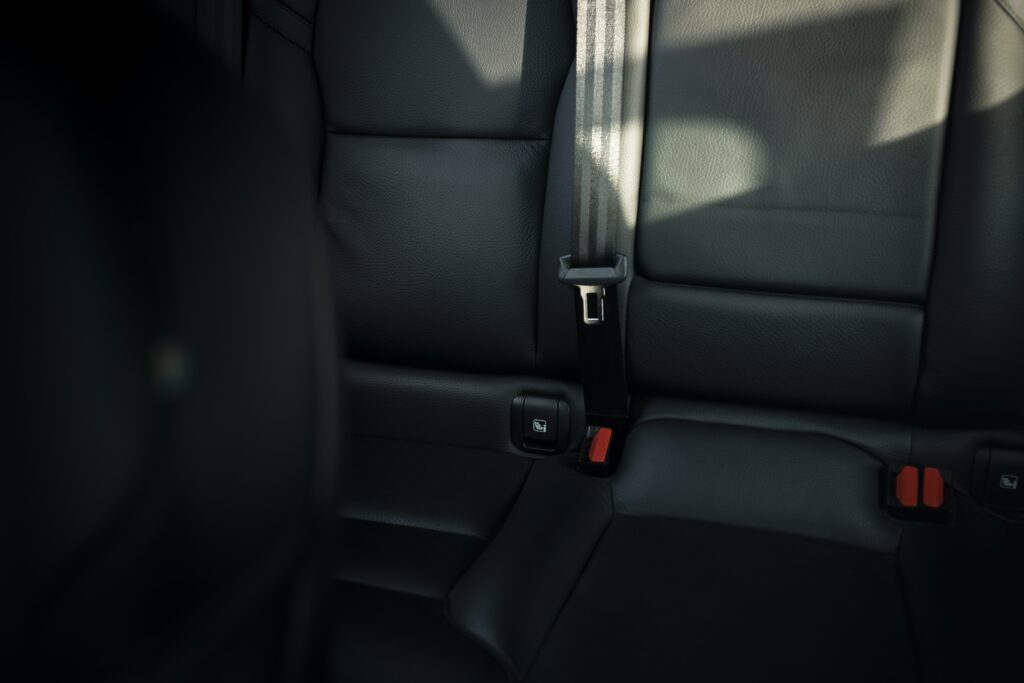If you’ve ever wondered whether using a portable tire compressor carries any risk of electric shock, you’re not alone. It’s a question that often comes to mind when dealing with electrical devices, especially ones that we handle on a regular basis. In this article, we’ll explore the potential dangers associated with portable tire compressors and provide you with the necessary information to ensure your safety. So, let’s put your concerns to rest and learn more about this topic together.

Understanding the Basics of Portable Tire Compressors
What is a Portable Tire Compressor?
A portable tire compressor is a compact and versatile device designed to inflate vehicle tires quickly and conveniently. It is small enough to be easily carried and transported, making it an essential tool for emergency roadside assistance or regular tire maintenance. The compressor is typically powered by either electricity or an onboard battery, allowing it to be used in various settings without relying on external power sources.
How does a Portable Tire Compressor work?
Portable tire compressors work by compressing and storing air in a tank, which can then be used to inflate tires. The compressor is equipped with a motor that drives a piston or impeller, creating air flow and generating pressure. When connected to a tire valve, the compressor forces compressed air into the tire, increasing its pressure to the desired level. Portable tire compressors often come with pressure gauges, allowing you to monitor and adjust the air pressure accurately.
Uses of a Portable Tire Compressor
Portable tire compressors have multiple uses, making them a useful tool for both personal and professional purposes. Some common applications include:
- Inflating vehicle tires: Portable tire compressors are primarily designed for inflating vehicle tires quickly and efficiently, ensuring optimal tire pressure for safety and performance.
- Inflating sports equipment: From basketballs to bicycle tires, a portable tire compressor can be used to inflate various sports equipment, eliminating the need for manual pumps.
- Operating pneumatic tools: Many portable tire compressors can also power pneumatic tools, such as nail guns and pneumatic wrenches, making them versatile resources for construction or DIY projects.
- Inflating recreational items: Whether it’s inflatables for the pool or air mattresses for camping, a portable tire compressor can easily inflate a range of recreational items, enhancing your outdoor adventures.
Safety Considerations with Portable Tire Compressors
General Safety Precautions
Although portable tire compressors are generally safe to use, it is essential to follow some basic safety precautions to avoid accidents and injuries. These include:
- Read the user manual: Familiarize yourself with the specific operating instructions and safety guidelines provided by the manufacturer. This will ensure you have a good understanding of how to use the compressor correctly and safely.
- Wear appropriate protective gear: Eye protection and gloves can help shield you from any debris or potential hazards that may arise during operation.
- Disconnect from the power source before maintenance: Before performing any maintenance or repairs on the compressor, make sure it is disconnected from the power source and depressurized to prevent any accidental startups or releases of stored pressure.
Potential Risks and Hazards
While portable tire compressors are generally safe, there are potential risks and hazards that users should be aware of. Some common risks include:
- Overheating: Continuous use of the compressor without allowing it to cool down may lead to overheating, which can pose a fire hazard or damage the internal components of the device.
- Flying debris: The release of compressed air can cause debris or particles to become airborne, potentially resulting in eye injuries or skin abrasions if proper safety precautions are not taken.
- Leaking or burst hoses: Over time, hoses and connections can degrade or develop cracks, leading to leaks or even bursts. This can cause sudden pressure releases and potential injuries to the user or bystanders.

Risk of Electric Shock with Portable Tire Compressors
Factors increasing the risk of electric shocks
Portable tire compressors that are powered by electricity introduce the risk of electric shocks if proper precautions are not followed. Several factors can increase the risk, including:
- Damaged power cords or plugs: Frayed or damaged power cords or plugs increase the likelihood of electrical accidents. It is crucial to inspect the cord regularly and replace any damaged or worn-out parts.
- Wet or damp conditions: Operating the compressor in wet or damp conditions can create a conducive environment for electrical currents to flow and increase the risk of electric shocks.
- Lack of grounding: Inadequate grounding of the compressor can increase the risk of electric shocks, especially during power surges or faulty electrical connections.
Cases of electric shocks with tire compressors
While cases of electric shocks with portable tire compressors are relatively rare, they can still occur due to various factors. These incidents are often a result of negligence, improper usage, or failure to adhere to safety guidelines. To avoid accidents, it is crucial to be aware of the causes of electric shocks and take necessary precautions when operating a portable tire compressor.
Causes of Electric Shocks with Portable Tire Compressors
Faulty Wiring or Electrical Components
One of the leading causes of electric shocks with portable tire compressors is faulty wiring or electrical components. Over time, the insulation around wires can deteriorate or become damaged, exposing the user to the risk of electric shock. Similarly, defective electrical components, such as switches or circuit boards, can malfunction and cause unexpected electrical currents to pass through the compressor. Routine inspection and maintenance can help identify and rectify these issues before they become hazardous.
Operating the compressor in wet conditions
Operating a portable tire compressor in wet conditions significantly increases the risk of electric shocks. Water is a good conductor of electricity, and when it comes into contact with live electrical components, it can create a path for electrical current to flow through the user’s body. It is crucial to ensure that the compressor and surrounding area are dry and free from any moisture before operating the device.
Inadequate Grounding
Proper grounding is essential for electrical safety and is especially critical when using a portable tire compressor. Inadequate grounding can lead to electrical build-up or electrical surges, increasing the risk of electric shocks. It is essential to ensure that the compressor is properly grounded and that all electrical connections are secure. Consulting a professional electrician can help ensure that the grounding of the compressor meets the necessary safety standards.

How Electric Shocks Affect the Body
Immediate Effects of Electric Shocks
Electric shocks can have immediate effects on the body, which can range from mild to severe depending on the voltage and duration of exposure. Some common immediate effects include:
- Muscle contractions: Electric shocks can cause muscle contractions, which can range from mild twitches to uncontrolled spasms. These muscle contractions can lead to injuries or falls, especially if the electric shock occurs while the person is standing or operating machinery.
- Burns and tissue damage: Electric shocks can result in burns and tissue damage at the points where the electric current enters and exits the body. The severity of the burns depends on the voltage and duration of the shock.
- Respiratory distress or cardiac arrest: In severe cases, electric shocks can disrupt the normal functioning of the heart or respiratory system, leading to cardiac arrest or difficulty breathing. Immediate medical attention is crucial in such situations.
Long-Term Effects of Electric Shocks
In addition to the immediate effects, electric shocks can also have long-term consequences on the body. These can include:
- Nerve damage: Electric shocks can cause damage to the nervous system, leading to chronic pain, tingling, or numbness in the affected areas.
- Psychological effects: Experiencing an electric shock can lead to psychological trauma, including anxiety, panic attacks, or post-traumatic stress disorder (PTSD). Seek professional help if you are experiencing any psychological distress following an electric shock incident.
- Organ damage: Severe electric shocks can cause internal injuries and damage to vital organs, such as the heart, lungs, or brain. These injuries may require extensive medical treatment and ongoing care.
Prevention Measures to Avoid Electric Shocks
Proper Maintenance and Inspection
Regular maintenance and inspection of your portable tire compressor can help identify and rectify potential electrical hazards before they pose a risk. Some important measures include:
- Inspecting power cords and plugs: Check for any signs of damage or wear on the power cord and plugs. Replace any frayed or damaged cords immediately.
- Cleaning and drying: Keep the compressor clean and dry, preventing moisture or dirt from affecting the electrical components.
- Professional servicing: Engage a qualified professional for periodic servicing and inspection of the compressor, ensuring that all electrical components are in proper working condition.
Safe Handling and Usage
Following safe handling and usage practices is essential to prevent electric shocks. Some important guidelines include:
- Read the user manual: Familiarize yourself with the proper operating procedures and manufacturer’s recommendations. This will ensure that you understand the correct usage and safety precautions specific to your portable tire compressor.
- Avoid overload: Do not exceed the recommended operating capacity of the compressor. Overloading can lead to overheating and electrical hazards.
- Use a residual current device (RCD): Consider using an RCD or ground-fault circuit interrupter (GFCI) when operating the compressor. These devices monitor the electrical current and can quickly shut off the power supply in the event of a fault, reducing the risk of electric shocks.
Using Portable Tire Compressors in Appropriate Conditions
To minimize the risk of electric shocks, it is essential to use portable tire compressors in appropriate conditions. Some considerations include:
- Dry environment: Only operate the compressor in a dry environment and ensure that both the compressor and surrounding area are free from moisture.
- Keep away from water sources: Avoid using the compressor near water sources, such as puddles or wet surfaces. Maintain a safe distance to prevent accidental contact with water and electricity.
- Sheltered from extreme weather conditions: Protect the compressor from extreme weather conditions, such as heavy rain or extreme heat, as these can affect the electrical components and increase the risk of electric shocks.
First Aid Response to Electric Shocks
Step-by-step Response to Electric Shock Victims
In the event of an electric shock incident, taking prompt and appropriate action is crucial. Here are the steps to follow when responding to electric shock victims:
- Ensure the victim’s safety: Before approaching the victim, ensure that the power source is turned off or the victim is no longer in contact with the electric current. Failure to do so may result in multiple casualties.
- Call for help: Contact emergency medical services immediately to seek professional medical help.
- Do not touch the victim: It is essential not to touch the victim directly, as you may also be exposed to the electric current. Instead, use a non-conductive material, such as a wooden broom handle, to separate the victim from the source of electricity.
- Check for breathing and responsiveness: Assess the victim’s breathing and responsiveness. If they are not breathing or unresponsive, begin CPR immediately, if you are trained to do so.
- Protect the victim: If the victim is conscious and breathing, lay them on their back and keep them comfortable until medical help arrives. Cover the victim with a blanket to prevent hypothermia.
- Monitor vital signs: Continuously monitor the victim’s vital signs, such as breathing and pulse, until medical professionals take over.
Recovery and Follow-up Care
After the initial first aid response, it is crucial for electric shock victims to receive medical attention and follow-up care. Even if the initial symptoms appear mild, there may be underlying injuries that require proper evaluation and treatment. Medical professionals will assess the extent of the electric shock’s impact on the victim’s body, provide necessary treatments, and monitor their recovery. Follow all medical advice and attend any necessary follow-up appointments to ensure a full and safe recovery.
Conclusion: Balancing Convenience and Safety
Advantages of Portable Tire Compressors
Portable tire compressors offer numerous advantages, making them indispensable tools for many individuals. Some key advantages include:
- Convenience: Portable tire compressors allow for quick and easy tire inflation, providing a practical solution for emergencies or regular maintenance.
- Portability: Being compact and lightweight, these compressors can be easily transported and stored without taking up much space.
- Versatility: In addition to inflating vehicle tires, portable tire compressors can be used for a variety of purposes, such as inflating sports equipment or operating pneumatic tools.
Staying Safe without Compromising Convenience
While portable tire compressors offer convenience, it is vital to prioritize safety to prevent accidents and injuries. By following general safety precautions, being aware of the risks of electric shock, and taking appropriate prevention measures, you can enjoy the benefits of portable tire compressors while minimizing potential hazards. Regular maintenance, safe handling practices, and using the compressor in appropriate conditions are essential steps in ensuring your safety and the optimal performance of your portable tire compressor.
